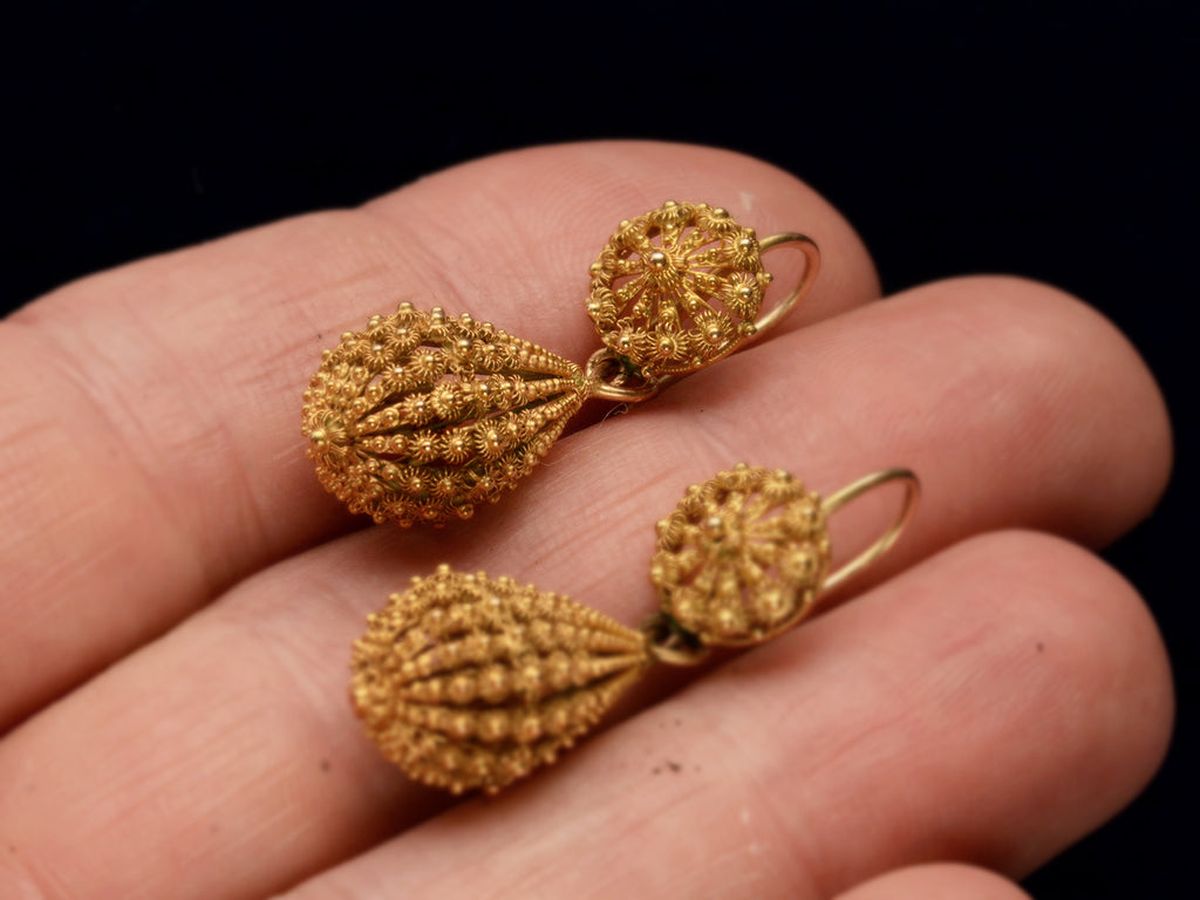
Cannetille is a type of intricate metalwork often used in jewelry and decorative arts. Originating in the 18th century, this technique involves twisting fine gold or silver wires into delicate patterns, creating a lace-like appearance. Cannetille was particularly popular during the Georgian and Victorian eras, adorning brooches, earrings, and other accessories. Its unique, airy designs make it stand out from other metalworking techniques. Whether you're a history buff, a jewelry enthusiast, or just curious about antique craftsmanship, learning about Cannetille offers a fascinating glimpse into the artistry of the past. Ready to dive into 33 captivating facts about this exquisite art form? Let's get started!
What is Cannetille?
Cannetille is a type of intricate embroidery or metalwork that has been used in fashion and jewelry for centuries. It involves twisting fine wires into delicate, ornate patterns. Let's dive into some fascinating facts about this beautiful craft.
-
Cannetille originated in France during the 18th century. It became popular in the court of Louis XVI.
-
The name "Cannetille" comes from the French word "canette," meaning a small tube or reel, referring to the coiled wire used in the technique.
-
Cannetille is often confused with filigree, but they are different. Filigree involves soldering wires together, while Cannetille uses coiled wires sewn onto fabric or metal.
-
This technique was initially used in military uniforms to create elaborate epaulettes and other decorations.
-
Cannetille became a popular embellishment in women's fashion during the Regency and Victorian eras.
Materials Used in Cannetille
The materials used in Cannetille are crucial for achieving its delicate and intricate designs. Here are some interesting facts about the materials involved.
-
Gold and silver wires are the most commonly used materials in Cannetille.
-
Copper wires are also used, especially in more affordable pieces.
-
Silk threads can be combined with metal wires to add color and texture.
-
Some Cannetille pieces incorporate gemstones or beads for added sparkle.
-
The wires used in Cannetille are often extremely fine, sometimes as thin as a human hair.
Techniques and Tools
Creating Cannetille requires specific techniques and tools. Here are some facts about how this intricate work is done.
-
A special tool called a "spindle" is used to twist the wires into coils.
-
The coils are then shaped into various patterns using small pliers and tweezers.
-
Cannetille artists often use a magnifying glass to see the fine details of their work.
-
The process can be very time-consuming, with some pieces taking weeks or even months to complete.
-
Precision and patience are essential skills for anyone working with Cannetille.
Cannetille in Fashion
Cannetille has made significant contributions to the world of fashion. Here are some facts about its role in clothing and accessories.
-
Cannetille was a popular embellishment on women's gowns in the 19th century.
-
It was often used to decorate wedding dresses, adding a touch of luxury and elegance.
-
Cannetille also appeared on accessories like handbags, gloves, and hats.
-
Some high-end fashion designers still use Cannetille in their collections today.
-
Vintage Cannetille pieces are highly sought after by collectors and fashion enthusiasts.
Cannetille in Jewelry
Jewelry is another area where Cannetille shines. Here are some facts about its use in creating beautiful adornments.
-
Cannetille is often used in brooches, earrings, and necklaces.
-
The intricate designs make each piece unique and highly detailed.
-
Cannetille jewelry was especially popular during the Georgian and Victorian eras.
-
Some modern jewelers continue to use Cannetille techniques to create contemporary pieces.
-
Antique Cannetille jewelry can be quite valuable, especially if it is well-preserved.
Cannetille Around the World
While Cannetille originated in France, it has influenced and been adopted by various cultures. Here are some facts about its global reach.
-
Cannetille techniques spread to other European countries, including England and Italy.
-
In Russia, Cannetille became popular in the 19th century, especially in the creation of religious icons.
-
Middle Eastern artisans have also adopted Cannetille, incorporating it into traditional jewelry designs.
-
Cannetille has influenced modern embroidery techniques in various parts of the world.
-
Each culture adds its unique twist to Cannetille, making it a versatile and adaptable art form.
Preservation and Modern Use
Cannetille is not just a relic of the past; it continues to be relevant today. Here are some facts about its preservation and modern applications.
-
Museums around the world preserve Cannetille pieces as part of their textile and jewelry collections.
-
Some contemporary artists and designers are reviving Cannetille techniques in their work.
-
Workshops and classes are available for those interested in learning this intricate craft.
The Beauty of Cannetille
Cannetille's intricate designs and rich history make it a standout in the world of embroidery. This technique, with its roots in the 18th century, showcases the artistry and skill of its creators. From its use in military uniforms to its presence in haute couture, cannetille has left an indelible mark. Its delicate spirals and coils, often made from gold or silver wire, add a touch of elegance to any garment. Whether you're a history buff or a fashion enthusiast, appreciating the craftsmanship behind cannetille is easy. Its timeless appeal ensures it remains a favorite among designers and collectors alike. So next time you see a piece adorned with cannetille, take a moment to admire the dedication and talent that went into its creation. This art form, though centuries old, continues to inspire and captivate.
Was this page helpful?
Our commitment to delivering trustworthy and engaging content is at the heart of what we do. Each fact on our site is contributed by real users like you, bringing a wealth of diverse insights and information. To ensure the highest standards of accuracy and reliability, our dedicated editors meticulously review each submission. This process guarantees that the facts we share are not only fascinating but also credible. Trust in our commitment to quality and authenticity as you explore and learn with us.
